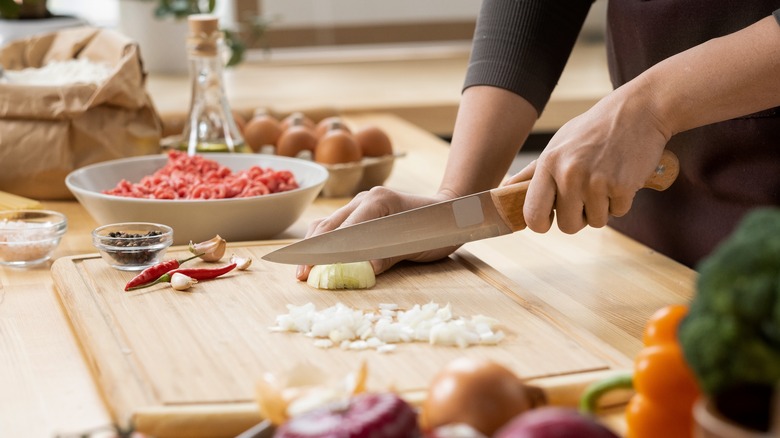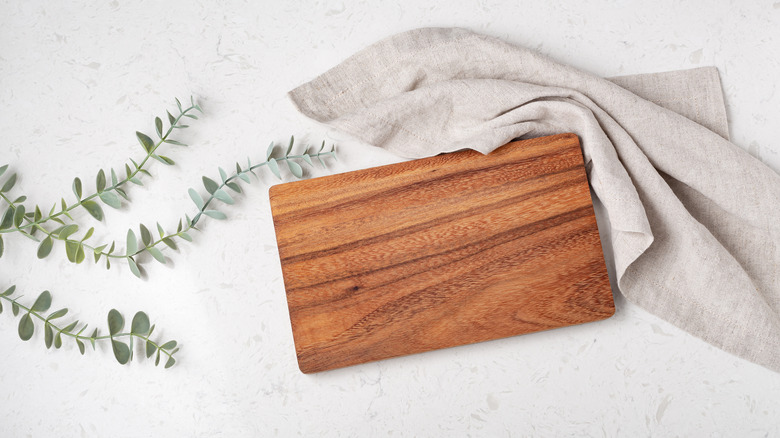Why You Shouldn't Substitute Mineral Oil For Your Wood Cutting Board
Of all the tools in the arsenal of kitchen utensils and appliances, none are so consistently cut up and beaten into as the cutting board. It is the shield that guards the counters of your kitchen against any knives and/or food residue that may threaten its beautiful finish. They're made of all kinds of resilient materials, but the best are made from wood, per Serious Eats. Wood, however, takes a bit of maintenance to retain fidelity and you need to be very mindful of what exactly you're using to clean your wooden cutting boards.
Because wood is porous, cleaning a wooden cutting board is a bit more involved (but still totally worth it) than most other materials. According to the New York Times, you want to hand wash your board gently with warm water and some unscented soap. Wash the entire board evenly, then dry with a drying towel. After, set it out on its edge to air dry while you prepare the next step.
The next oily step
Wood dries out and can cause all sorts of problems for your cutting board if left unattended, per Kitchn. It can warp over time, and the wood of your board can eventually become weaker and unusably brittle, so to ensure that the wood stays healthy, you need to coat your cutting board with oils. According to Bon Appétit, it is best to use food-safe mineral oils, as they won't contaminate the food you're cutting, are colorless, and are odorless. Once applied, the oil will hydrate the wood, so it doesn't dry and split. Doing this will add an additional layer of protection to keep up the wood's appearance and make it a bit more prepared to take a beating from your knife.
There are other ways to clean and protect your wooden cutting board, but what you don't want to use is use any cooking oil, as these oils could seep into the porous wood of your board and ultimately go rancid, which will result in a funky smell, disgusting food, and an unusable chopping board.

